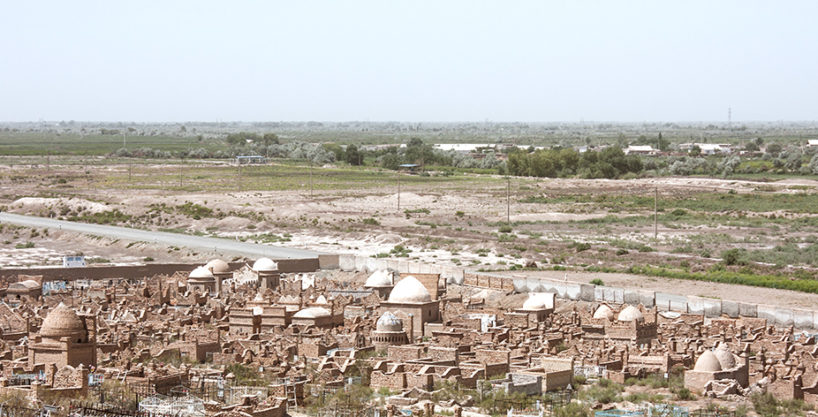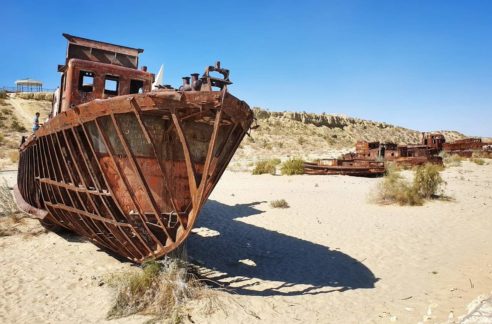The Republic of Karakalpakstan is located in the North-West of Uzbekistan. More than 80% of the Republic’s territory is occupied by hot deserts. Karakalpakstan is closely bordered by the Karakum desert to the southwest, the Ustyurt Plateau to the Northwest, and the Kyzylkum desert to the northeast. Karakalpakstan also includes the southern half of the Aral sea, on the dry bottom of which a new Aralkum desert is now being formed.
Once on the Ustyurt Plateau, you will be able to observe the flat desert terrain, interrupted by chalk deposits in the form of rocks and cracks appearing here and there.it looks like a Martian landscape from a Hollywood movie and it seems that by an incredible chance you are exploring a different, unfamiliar planet.

The Ustyurt plateau is especially beautiful during sunsets and sunrises. The chalk cliffs during sunsets and sunrises present an impressive picture, when the white rocks are colored purple.
The flora and fauna of Ustyurt is not immediately visible to tourists. Gradually getting used to the unusual natural conditions, you can see colonies of gerbils, squirrels and gerbils. It is home to a large number of birds of prey-vultures and eagles, which sit proudly on the rocks of chinka. You can also see saigas, although it is unlikely that Amateur photographers will be able to capture these timid and very fast animals on camera. But travelers can take photos of Ustyurt argali in their natural habitat. What is most surprising is the presence of wild horses on the Ustyurt plateau. They say that there used to be nomad farms here, but the horses went wild and settled on the plateau, where they still live.


Aral sea
The next and mandatory object to visit is the Aral sea.
Aral sea… Today, the name of this lake is associated with an environmental disaster. But what was it like 60 years ago?
The Aral sea is located on the border of Kazakhstan and Uzbekistan. Before the shallowing, the Aral sea was the fourth largest lake in the world. There were ports, fish factories, and fishing fleets sailed along the Aral sea.
Until the 80-ies of the XX century, there were 34 species of fish, 20 of which were of commercial significance. The Aral sea has dried up several times in its history. This is evidenced by the numerous remains of flora and fauna found on the dried-up bottom of the Aral sea. Despite the environmental problems, the nature of this area is truly unique.
Based on geological studies of the soil, scientists have concluded that the territory of the desert was once the bottom of a huge sea.
Even today, remains of the ancient marine world can be found here in the form of remains of ancient marine animals of the Cretaceous and Cenozoic periods.
Traveling through Karakalpakstan, you can not only see incredible natural landscapes, but also visit the ruins of ancient and medieval monuments, as the territory is a kind of “archaeological reserve”.
Today, there are more than 300 archaeological sites.
Once, in ancient times, the territory of Karakalpakstan, along with the modern Khorezm region and adjacent areas of Turkmenistan, formed a single state of Ancient Khorezm and was the birthplace of Zoroastrianism and the Holy book of the Avesta.


